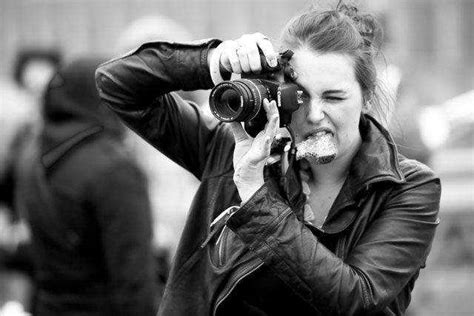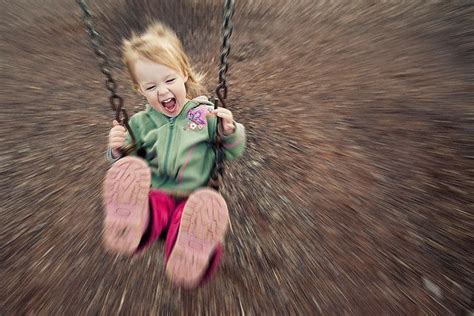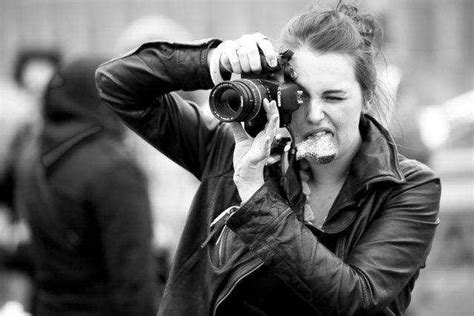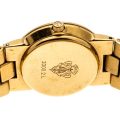Mastering Candid Photography: Essential Camera Settings and Techniques
Candid photography is the art of capturing genuine moments, unposed expressions, and spontaneous interactions. It’s about freezing time and preserving the raw, unfiltered beauty of life’s fleeting moments. While capturing these precious moments can seem effortless, it requires a keen eye for detail, a knack for anticipating action, and a deep understanding of your camera settings. This guide will explore the crucial camera settings that will help you master the art of candid photography.
What is the Best Aperture for Candid Photography?
Aperture, represented by f-stops, controls the amount of light entering your camera lens. It’s a crucial setting for candid photography, influencing depth of field and the overall sharpness of your images.
A wide aperture (small f-number, like f/1.8 or f/2.8) creates a shallow depth of field, blurring the background and emphasizing your subject. This is ideal for isolating your subject, drawing attention to them and creating a sense of intimacy. Think of a portrait where the subject is in sharp focus while the background is beautifully blurred, emphasizing their features and creating a dreamy ambiance.
For candid moments where your subject is moving around, a wider aperture can be a challenge. Since less of the scene is in focus, subjects outside the focus plane can appear blurry or out of focus. This can be a creative choice, but it’s important to be aware of the limitations.
A narrower aperture (larger f-number, like f/8 or f/11) creates a greater depth of field, keeping more of the scene in focus. This is helpful for capturing candid moments in busy environments, ensuring that the entire scene is sharp, including your subject and the surrounding details.
The ideal aperture for candid photography depends on the specific situation and your desired effect. For portraits and intimate moments, a wider aperture often excels. In crowded environments, a narrower aperture might be more practical.
Here’s a table summarizing the key points about aperture in candid photography:
| Aperture | Depth of Field | Benefits | Limitations |
|---|---|---|---|
| Wide (e.g., f/1.8, f/2.8) | Shallow | – Isolates subject – Blurs background – Creates intimacy |
– Requires careful focus – May blur moving subjects |
| Narrow (e.g., f/8, f/11) | Greater | – Keeps more of the scene in focus – Ideal for busy environments |
– Less background blur – Can be less flattering for portraits |
Experimenting with different apertures is key to understanding their impact on your candid photography. Start with a wide aperture to isolate subjects and then gradually narrow it down to capture a greater depth of field. You’ll discover the perfect balance for your unique shooting style.
How to Use Shutter Speed for Candid Photography?
Shutter speed, measured in fractions of a second, determines how long the camera’s shutter remains open to capture light. It’s a critical setting for candid photography, controlling motion blur and freeze-frame effects.
A fast shutter speed (e.g., 1/1000 second) freezes motion, capturing subjects in sharp detail even when they’re moving quickly. This is ideal for capturing action shots, like a child playing or a dancer mid-leap.

A slow shutter speed (e.g., 1/30 second) intentionally introduces motion blur, creating a sense of movement and capturing the flow of action. It’s particularly effective for capturing the dynamism of sporting events or conveying a feeling of speed in landscapes.

For candid photography, choosing the right shutter speed depends on the subject’s movement and your artistic vision. A fast shutter speed is generally preferred to capture sharp images, especially when subjects are moving. However, a slow shutter speed can add dynamism and artistic flair to your candid photographs, especially in low-light conditions.
Here are some tips for using shutter speed in candid photography:
- Prioritize a fast shutter speed for moving subjects. This helps ensure crisp details and a sense of action.
- Experiment with slow shutter speed in controlled environments. Use a tripod for stability and capture artistic motion blur.
- Use burst mode for capturing fast-paced events. This allows you to take multiple shots in quick succession, increasing your chances of capturing the perfect candid moment.
Understanding the relationship between shutter speed and motion blur is crucial for creating compelling candid photographs. By experimenting with different shutter speeds, you’ll gain the ability to capture the essence of movement and the raw energy of life’s candid moments.
How to Use ISO for Candid Photography?
ISO, or International Organization for Standardization, refers to your camera’s sensitivity to light. It’s a crucial setting for candid photography, influencing image quality and exposure in different lighting conditions.
A lower ISO setting (e.g., ISO 100 or 200) is ideal for well-lit environments. It produces images with minimal noise and high detail, perfect for preserving the clarity and sharpness of candid moments.
A higher ISO setting (e.g., ISO 800 or 1600) is necessary in low-light situations. It allows the camera to capture more light, making it possible to photograph in dim environments. However, higher ISO settings introduce noise, which can create a grainy appearance in your images.
Choosing the right ISO setting is essential for balancing image quality and exposure. In bright light, use a lower ISO to minimize noise and maximize detail. In low-light conditions, increase the ISO to capture enough light, accepting a moderate level of noise.
Here are some additional tips for using ISO in candid photography:
- Start with a low ISO (e.g., ISO 100 or 200) in well-lit environments. This ensures optimal image quality.
- Increase ISO gradually in low-light conditions. Aim for the lowest ISO possible while still maintaining a well-exposed image.
- Use noise reduction features. Most cameras have built-in noise reduction features that can help minimize noise in images captured at higher ISO settings.
- Learn to embrace noise. In some cases, a slight amount of noise can add a vintage or gritty aesthetic to your candid photos.
Understanding the interplay between ISO and noise is crucial for capturing quality candid photos. By choosing the right ISO setting for each situation, you can balance light, sharpness, and artistic intent.
What is the Best White Balance for Candid Photography?
White balance, a camera setting that adjusts the color temperature of your images, is essential for achieving natural-looking colors in your candid photographs. It helps ensure that white objects appear white, not tinted with yellow or blue hues.
Different lighting conditions have different color temperatures. For example, sunlight has a warmer color temperature than fluorescent lights. The white balance setting helps your camera compensate for these variations, ensuring accurate color reproduction.
For candid photography, the ideal white balance setting depends on the specific lighting conditions. Here are some common white balance settings:
- Auto White Balance (AWB): The most common setting, AWB automatically adjusts the white balance based on the scene. It works well in most situations but may require manual adjustments in challenging lighting conditions.
- Daylight: Use this setting for outdoor photography under bright sunlight. It helps capture vibrant colors and a warm, natural look.
- Cloudy: Use this setting for overcast skies or shaded areas. It produces cooler, more balanced colors, compensating for the lack of direct sunlight.
- Fluorescent: Use this setting for indoor environments lit by fluorescent lights. It helps correct for the greenish cast often associated with fluorescent lighting.
- Tungsten/Incandescent: Use this setting for indoor environments lit by traditional incandescent bulbs. It corrects for the yellow or orange hue often produced by these lights.
While AWB is a good starting point, experimenting with different white balance settings can enhance the overall look of your candid photographs. For example, you might use a warmer white balance to create a nostalgic feel or a cooler white balance to create a more dramatic atmosphere.
Here are some tips for using white balance in candid photography:
- Start with AWB and adjust manually as needed. If you notice color casts in your images, experiment with other white balance settings to achieve a more natural look.
- Use custom white balance for consistent color reproduction. Custom white balance allows you to create a custom white balance setting based on a specific light source, ensuring accurate color reproduction across multiple shots.
- Post-process white balance in editing software. If you are unhappy with the white balance in your images, you can easily adjust it in post-processing software like Adobe Lightroom or Photoshop.
Mastering white balance is crucial for capturing candid photographs with accurate and pleasing colors. By understanding different white balance settings and their applications, you can achieve a professional look for your candid images.
What Are the Best Settings for Candid Photography?
Choosing the optimal camera settings for candid photography depends on the specific situation and your creative vision. However, here are some general guidelines that will help you capture the essence of candid moments:
- Aperture: Wide aperture (e.g., f/1.8, f/2.8) for isolating subjects and creating a blurred background. Narrow aperture (e.g., f/8, f/11) for greater depth of field in busy environments.
- Shutter speed: Fast shutter speed (e.g., 1/1000 second) for freezing motion. Slow shutter speed (e.g., 1/30 second) for capturing motion blur and conveying movement.
- ISO: Low ISO (e.g., ISO 100, 200) for minimal noise in well-lit environments. Higher ISO (e.g., ISO 800, 1600) for low-light situations, accepting a moderate level of noise.
- White balance: Auto white balance (AWB) for most situations, with manual adjustments as needed. Use specific white balance settings for different lighting conditions to ensure accurate color reproduction.
Experimenting with different settings and exploring their impact on your candid photography is crucial. The ideal settings will vary depending on the scene, lighting, and your desired effect. Remember, the most important setting is your eye for detail and your ability to anticipate the fleeting moments of life.
What Are the Best Lenses for Candid Photography?
The choice of lens can significantly impact your candid photography. Here are some popular lens types that are well-suited for capturing candid moments:
- Prime lenses: Prime lenses have a fixed focal length, offering excellent image quality, fast aperture, and a compact size. They are ideal for capturing portraits, street photography, and low-light scenes. Examples include the Canon EF 50mm f/1.8 STM and the Nikon 35mm f/1.8G.
- Wide-angle lenses: Wide-angle lenses have a wide field of view, capturing more of the scene, making them ideal for capturing candid moments in tight spaces or landscapes. They are particularly useful for capturing the environment and context surrounding your subject. Examples include the Canon EF 16-35mm f/2.8L III USM and the Nikon AF-S FX NIKKOR 14-24mm f/2.8G ED.
- Telephoto lenses: Telephoto lenses offer greater magnification, allowing you to capture distant subjects without disturbing them. They are ideal for candid wildlife photography, street photography, and capturing intimate moments from a distance. Examples include the Canon EF 70-200mm f/2.8L IS III USM and the Nikon AF-S NIKKOR 70-200mm f/2.8E FL ED VR.
The best lens for candid photography depends on your specific needs and preferences. Consider the focal length, aperture, and image quality when making your selection. Experiment with different lenses to find the one that best suits your shooting style and subject matter.
How to Improve Your Candid Photography Skills?
Mastering candid photography is an ongoing journey of practice, observation, and experimentation. Here are some tips to enhance your skills:
- Practice regularly: The more you shoot, the better you’ll become at anticipating moments and capturing them in the blink of an eye.
- Observe your surroundings: Pay attention to details, expressions, and interactions happening around you. This will help you identify potential candid moments.
- Be patient and observant: Candid photography is about capturing the essence of a moment, so be patient and wait for the right time to press the shutter.
- Learn to anticipate action: Develop an eye for anticipating the next move or expression. This will help you capture spontaneous and unpredictable moments.
- Don’t be afraid to get close: Stepping into the scene and interacting with your subjects can lead to more genuine and engaging candid photos.
- Use your camera’s continuous shooting mode: This allows you to capture a series of images in quick succession, increasing your chances of capturing the perfect candid moment.
- Review your images regularly: Take the time to critically analyze your photos. Identify what worked well and what could be improved. Learn from your mistakes and refine your techniques.
- Get feedback from others: Show your photos to fellow photographers or friends and ask for their honest feedback. This can provide valuable insights and help you grow as a photographer.
Remember, candid photography is about capturing the true essence of life’s moments. Be patient, observant, and always ready to press the shutter. With practice and dedication, you can master the art of capturing candid moments and preserve the authentic beauty of the world around you.
What Are the Best Camera Settings for Candid Street Photography?
Street photography is a genre of candid photography that focuses on capturing everyday life in public spaces. It’s a vibrant and dynamic form of photography that requires a unique blend of technical skills, artistic vision, and sensitivity to your surroundings. Here are some essential camera settings for candid street photography:
- Aperture: A wide aperture (e.g., f/1.8, f/2.8) is generally preferred for isolating subjects from busy backgrounds and creating a sense of depth. It can also help capture a sense of movement and blur unwanted elements in the background.
- Shutter speed: A fast shutter speed (e.g., 1/250 second or faster) is crucial for freezing motion and capturing sharp images. This is especially important for capturing fleeting moments in busy street scenes.
- ISO: Keep the ISO as low as possible, especially during the day. Lower ISO settings minimize noise and produce sharper images. However, you may need to adjust ISO in low-light situations to maintain proper exposure.
- White balance: Auto white balance (AWB) is a good starting point, but you might need to adjust it manually depending on the lighting conditions. Experiment with different white balance settings to find the one that produces the most accurate and natural-looking colors.
- Focus mode: Use continuous autofocus (AF-C or AI Servo) for capturing moving subjects. This allows the camera to continuously track your subject and keep it in focus, even when they’re moving. If your camera has a back-button focus option, it can be useful for controlling focus without accidentally triggering the shutter release.
Remember, street photography is about capturing the fleeting moments of everyday life. Be prepared to react quickly, be observant, and always be ready to press the shutter. Practice your skills and experiment with different camera settings to develop a unique style that reflects your vision.
How to Capture Candid Portraits?
Candid portraits capture the essence of a person’s personality and emotions without them posing. They are often more authentic and engaging than traditional posed portraits. Here are some essential tips for capturing candid portraits:
- Build rapport with your subject: Make them feel comfortable and at ease. Start by chatting with them, getting to know their interests, and letting them relax in your presence.
- Be patient and observe: Wait for natural moments of interaction, expression, or movement. Don’t force the shot; let the moment unfold organically.
- Find the right light: Look for natural light that creates flattering shadows and highlights. Soft, diffused light is often ideal for candid portraits.
- Use a wide aperture: A wide aperture (e.g., f/1.8, f/2.8) will blur the background and isolate your subject, creating a more intimate and engaging portrait.
- Focus on the eyes: The eyes are the window to the soul, so make sure they are sharp and in focus. Look for moments when the eyes are conveying a specific emotion or expression.
- Consider the environment: Choose a background that complements your subject and adds to the overall story. Avoid distracting elements or clutter in the background.
Remember, candid portraits are all about capturing the essence of a person. Be patient, observe, and let your subject’s personality shine through in your photos.
What are the Best Tips for Capturing Candid Moments at Weddings?
Wedding photography is an exciting and challenging genre, and candid moments are often the most cherished memories for the bride and groom. Here are some tips for capturing those precious moments:
- Be unobtrusive: Blend into the background and capture moments without drawing attention to yourself. Avoid interrupting the flow of events or creating a sense of artificiality.
- Anticipate key moments: Pay attention to the wedding schedule and anticipate important events, such as the first dance, the cake cutting, and the speeches. Be ready to capture those special moments as they unfold.
- Focus on the emotions: Look for the expressions, gestures, and interactions that capture the joy, love, and laughter of the day.
- Use a wide aperture: A wide aperture (e.g., f/1.8, f/2.8) will help isolate your subjects and create a blurred background, emphasizing the emotions and expressions of the wedding party.
- Use a fast shutter speed: A fast shutter speed (e.g., 1/250 second or faster) will ensure sharp images, especially for capturing fast-paced moments like dancing or the exchange of vows.
- Shoot in burst mode: This allows you to capture a series of images in quick succession, increasing your chances of capturing the perfect candid moment.
- Don’t be afraid to experiment: Try different angles, perspectives, and compositions to find unique ways to capture the essence of the wedding day.
Candid wedding photography is about capturing the genuine joy and emotion of the day. Be patient, observant, and ready to capture the special moments that will be treasured for a lifetime.
How to Capture Candid Moments at Parties?
Parties are full of energy, laughter, and spontaneous moments, making them ideal subjects for candid photography. Here are some tips for capturing those precious moments:
- Blend in with the crowd: Become part of the party atmosphere and capture moments without drawing attention to yourself. Move around, interact with people, and let the party unfold naturally.
- Look for interesting interactions: Capture the conversations, the laughter, and the shared experiences that make parties so memorable.
- Use a wide aperture: A wide aperture (e.g., f/1.8, f/2.8) will create a blurred background, isolating your subjects and adding a sense of intimacy and energy to your photos.
- Use a fast shutter speed: A fast shutter speed (e.g., 1/250 second or faster) will help freeze motion and capture sharp images, especially when people are moving or dancing.
- Experiment with lighting: Play with natural and artificial light sources to create interesting effects. Use flash sparingly to avoid overwhelming the scene.
- Capture details: Don’t just focus on the overall party scene; capture the details that add context and personality, such as drinks, decorations, and the expressions of the partygoers.
Candid party photography is all about capturing the energy and spirit of the event. Be observant, react quickly, and don’t be afraid to experiment with different angles, perspectives, and compositions.
How to Capture Candid Moments on Vacation?
Vacation photography is about capturing the memories, experiences, and moments that make your trip special. Here are some tips for capturing candid vacation photos:
- Be spontaneous and open to opportunities: Don’t stick to a rigid schedule; allow yourself to be led by the moment and capture the unexpected.
- Focus on the people and the emotions: Capture the laughter, the joy, the shared experiences, and the connections you make with new people and places.
- Use a wide aperture for portraits: A wide aperture (e.g., f/1.8, f/2.8) will help blur the background and create a more intimate and personal feel for your portraits.
- Capture the atmosphere and the details: Don’t just focus on the main attractions; capture the details, the textures, and the sights that make your destination unique.
- Experiment with different angles and perspectives: Get creative and try shooting from different angles to create more dynamic and interesting photos.
Vacation photography is about capturing the memories that will last a lifetime. Be present, be observant, and capture the moments that define your trip. Don’t be afraid to experiment, and most importantly, enjoy the experience!
Table Summarizing Candid Photography Settings:
| Setting | Candid Photography | Street Photography | Wedding Photography | Party Photography | Vacation Photography |
|---|---|---|---|---|---|
| Aperture | Wide (f/1.8, f/2.8) for isolating subjects, narrow (f/8, f/11) for depth of field | Wide (f/1.8, f/2.8) for isolation and blur | Wide (f/1.8, f/2.8) for emphasis on subjects | Wide (f/1.8, f/2.8) for isolating subjects | Wide (f/1.8, f/2.8) for portraits |
| Shutter Speed | Fast (1/250 second or faster) for freezing motion | Fast (1/250 second or faster) for sharp images | Fast (1/250 second or faster) for sharp images | Fast (1/250 second or faster) for capturing motion | Fast (1/250 second or faster) for capturing movement |
| ISO | Low (ISO 100, 200) for minimal noise | Low (ISO 100, 200) for sharpness | Low (ISO 100, 200) for sharpness | Low (ISO 100, 200) for sharpness | Low (ISO 100, 200) for sharpness |
| White Balance | Auto White Balance (AWB) or manual adjustments | Auto White Balance (AWB) or manual adjustments | Auto White Balance (AWB) or manual adjustments | Auto White Balance (AWB) or manual adjustments | Auto White Balance (AWB) or manual adjustments |
| Focus Mode | Continuous autofocus (AF-C) for moving subjects | Continuous autofocus (AF-C) for moving subjects | Continuous autofocus (AF-C) for moving subjects | Continuous autofocus (AF-C) for moving subjects | Continuous autofocus (AF-C) for moving subjects |
FAQ:
What is the best camera for candid photography?
The best camera for candid photography depends on your needs and budget. A good camera for candid photography should have fast autofocus, a wide aperture lens, and a burst mode for capturing rapid sequences.
What are some common mistakes to avoid in candid photography?
Some common mistakes in candid photography include blurry images due to slow shutter speed or improper focus, noisy images due to high ISO settings, distracting backgrounds, and interrupting the natural flow of events. It’s essential to be patient, observant, and mindful of your settings.
How can I improve my composition in candid photography?
Composition is crucial for creating strong and impactful candid photographs. Try using the rule of thirds, leading lines, framing, and other compositional techniques to create visually appealing and balanced images.
How can I tell a story through my candid photos?
Telling a story through candid photography involves capturing a sequence of moments that build a narrative. Look for moments that convey emotions, interactions, and the essence of a scene.
What are some post-processing techniques for candid photography?
Post-processing can enhance your candid photos. You can use software like Adobe Lightroom or Photoshop to adjust exposure, contrast, color, noise, and sharpness.
How can I use candid photography to create a portfolio?
Building a portfolio of candid photos involves capturing a variety of subjects, moments, and styles. Experiment with different genres, explore various lighting conditions, and cultivate your unique artistic vision.
What are some resources for learning more about candid photography?
Many resources are available for learning more about candid photography, including online tutorials, photography books, workshops, and online communities.



